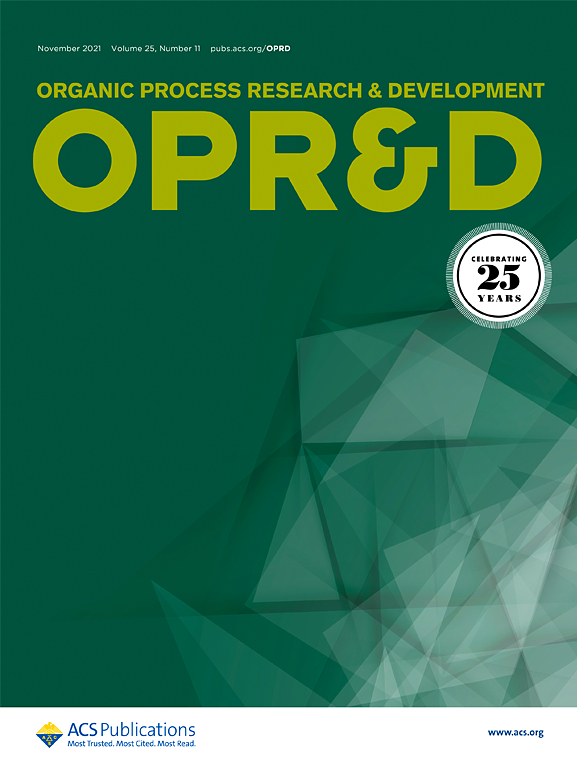复合肽生产中非对映异构体杂质的质量管理:以绵羊皮质激素为例
IF 3.5
3区 化学
Q2 CHEMISTRY, APPLIED
引用次数: 0
摘要
非对映异构体杂质在多肽合成中普遍存在,在多肽原料药生产中应以最高的审查程度进行控制。通常制备非对映异构体杂质标准品,并制定相应的分析方法来定量多肽产品中的非对映异构体杂质。该策略适合于含有不超过15个氨基酸残基的短至中型肽分子的工艺开发。然而,当感兴趣的肽含有更多的氨基酸时,它们将给单个非对映异构体杂质参考标准的制备和相应分析方法的发展带来实质性的挑战。在这种情况下,应该采取控制肽非对映异构体杂质的替代策略,以确保肽产物的手性完整性。以氘化盐酸(DCl)水解为基础的气相色谱-质谱(称为手性氨基酸分析)策略已应用于可的松绵羊生产工艺开发中的非对映异构体杂质控制。在此基础上完成了工艺优化。本文章由计算机程序翻译,如有差异,请以英文原文为准。

Quality Management of Diastereomeric Impurity for Complex Peptide Manufacturing: A Case Study of Corticorelin Ovine
Diastereomeric impurities are ubiquitous in peptide synthesis and should be controlled with the highest degree of scrutiny in peptide API manufacturing. Diastereomeric impurity reference standards are normally prepared, and the corresponding analytical methods are developed to quantify the diastereomer impurities in the peptide product. This strategy suits the process development for short- to medium-sized peptide molecules containing no more than 15 amino acid residues. However, when the peptides of interest contain more amino acids, they will pose substantial challenges to the preparation of individual diastereomeric impurity reference standards and the development of corresponding analytical methods. In such cases, alternative strategies for controlling peptide diastereomeric impurities should be pursued to ensure the chiral integrity of the peptide product. A deuterated HCl (DCl) hydrolysis-based GC-MS (termed chiral amino acid analysis) strategy has been applied to manage diastereomeric impurity control in the development of a corticorelin ovine manufacturing process. Process optimization was accomplished on this basis.
求助全文
通过发布文献求助,成功后即可免费获取论文全文。
去求助
来源期刊
CiteScore
6.90
自引率
14.70%
发文量
251
审稿时长
2 months
期刊介绍:
The journal Organic Process Research & Development serves as a communication tool between industrial chemists and chemists working in universities and research institutes. As such, it reports original work from the broad field of industrial process chemistry but also presents academic results that are relevant, or potentially relevant, to industrial applications. Process chemistry is the science that enables the safe, environmentally benign and ultimately economical manufacturing of organic compounds that are required in larger amounts to help address the needs of society. Consequently, the Journal encompasses every aspect of organic chemistry, including all aspects of catalysis, synthetic methodology development and synthetic strategy exploration, but also includes aspects from analytical and solid-state chemistry and chemical engineering, such as work-up tools,process safety, or flow-chemistry. The goal of development and optimization of chemical reactions and processes is their transfer to a larger scale; original work describing such studies and the actual implementation on scale is highly relevant to the journal. However, studies on new developments from either industry, research institutes or academia that have not yet been demonstrated on scale, but where an industrial utility can be expected and where the study has addressed important prerequisites for a scale-up and has given confidence into the reliability and practicality of the chemistry, also serve the mission of OPR&D as a communication tool between the different contributors to the field.

 求助内容:
求助内容: 应助结果提醒方式:
应助结果提醒方式:


